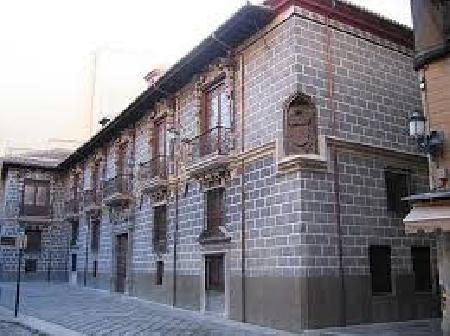 The Madrasah of Granada is in front of the Royal Chapel. It is currently the headquarters of the Royal Academy of Fine Arts of Our Lady of Sorrows, belonging to the University of Granada.
The Madrasah of Granada is in front of the Royal Chapel. It is currently the headquarters of the Royal Academy of Fine Arts of Our Lady of Sorrows, belonging to the University of Granada.
Originally it was the seat of the oldest university in Spain, founded in 1349 by Emir Yusuf I of Nazareth. In this madrasah theology, law, medicine and mathematics were taught, and it employed the best minds in the Muslim world, including the historian Ahmed ibn Mohammed al-Maqqari and the poet and politician Ibn al-Jatib Mohammed Lisan al-Din.
Like all the structures from the time of Yusuf I, it was extremely luxurious, as evidenced by the white marble portal, the fragments of which are preserved in the Archaeological Museum of Granada. The madrasah had an inner courtyard with a fountain and a mosque with a mihrab, a prayer niche.
The madrasah served as a university until 1499-1500 and was closed by the new Christian owners of the city, although a special point had been promised at Granada's handover that it would not be closed. But with the arrival of Archbishop Francisco Jiménez de Cisneros, known for his oppression of the Arabs, the Islamic population of the Albaicín neighborhood rebelled, and the archbishop used this revolt as an excuse to close the madrasah. The rich library, with its valuable manuscripts, was transferred to the Bib-Ramblé square, where it was burned in the exhibition.
The looted building and the closed madrasah was donated to the Catholic city hall by Fernando II in 1500. His grandson Carlos V largely rebuilt the interior of the palace. The building was almost completely rebuilt in 1722: only the old prayer room with the mihrab and the fragments of the portal have been preserved. In 1858 the palace was sold to private hands and converted into a textile warehouse. But at the end of the 19th century it was decided to put the old madrasah in order and the owners hired Mariano Contreras, (the same architect who restored the Alhambra), who rebuilt the old building. Restoration work was carried out in 2006-2007.
The characteristics of the baroque remodeling of the building, which preserves the Mudejar style features, are evident in the palace courtyard, surrounded by Tuscan marble columns. The eighteenth century staircase is covered with a churrigueresque dome. The baroque portal of the building has replaced the old marble. A horseshoe arch in the chapel leads to the mihrab, whose decoration is similar to that of the Alhambra.
Opening Hours:
Address: Calle Oficios, 14, 18001 Granada, Spain
Summer: Monday to Sunday from 10 a.m. at 8 p.m .; winter: Monday to Sunday from 10 a.m. - 7 p.m.
Telephone: +34 958 99 63 50
